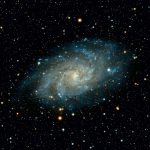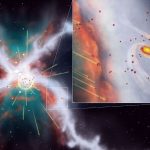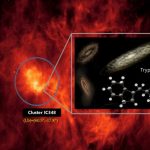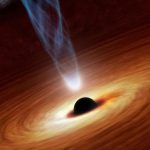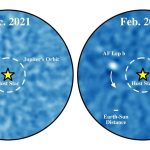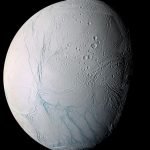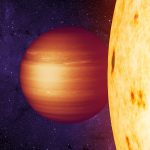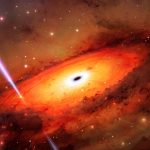Supervillains take note. Here’s a new way to destroy a star
If you’re an evil genius supervillain looking to freak out your enemy with a big messy space kablooie, here’s a novel way to do it.
What might extraterrestrials see when observing our Milky Way?
Imagine you're an alien astronomer, millions of light years away, looking at our Milky Way galaxy through your super-powered space telescope. What would you see?
A nearby supernova almost destroyed the solar system before it could form
Way back in time, about 4.6 billion years ago, our Sun and planets were busily forming nestled inside a cloud of gas and dust.
Not...
Scientists discover amino acid tryptophan in space
Scientists found evidence for the existence of the amino acid tryptophan in the interstellar material in a nearby star-forming region.
Scientists unveil secrets of supermassive black holes at the hearts of galaxies
An immense object, termed as Sagittarius A*, is nestled in the heart of our Milky Way galaxy.
This cosmic beast, a "supermassive" black hole, is...
Meet the younger cousin of Jupiter: Astronomers discover a low-mass exoplanet like never before
Jupiter has a 'younger sibling' residing 87.5 light years away, and for the first time, we've managed to snap a picture of it!
An extraordinary...
Saturn’s moon Enceladus harbors phosphates, a ‘building block of life’, shows study
Researchers report that water on Enceladus, one of Saturn’s moons, holds phosphates.
The team used data from NASA’s Cassini space mission to detect evidence of...
A brown dwarf is getting hit with so much radiation it’s hotter than the...
Hot Jupiters are large gas planets that orbit their star closely.
Unlike our Jupiter, which radiates more heat than it gets from the Sun, hot...
Scientists discover a new way stars could explode
Ever thought about how stars end their life cycle?
Normally, they either shed their layers and become white dwarfs, explode in a supernova, or collide...
Exoplanet may reveal secrets about the edge of habitability
How close can a rocky planet be to a star, and still sustain water and life?
A recently discovered exoplanet may be key to solving...


